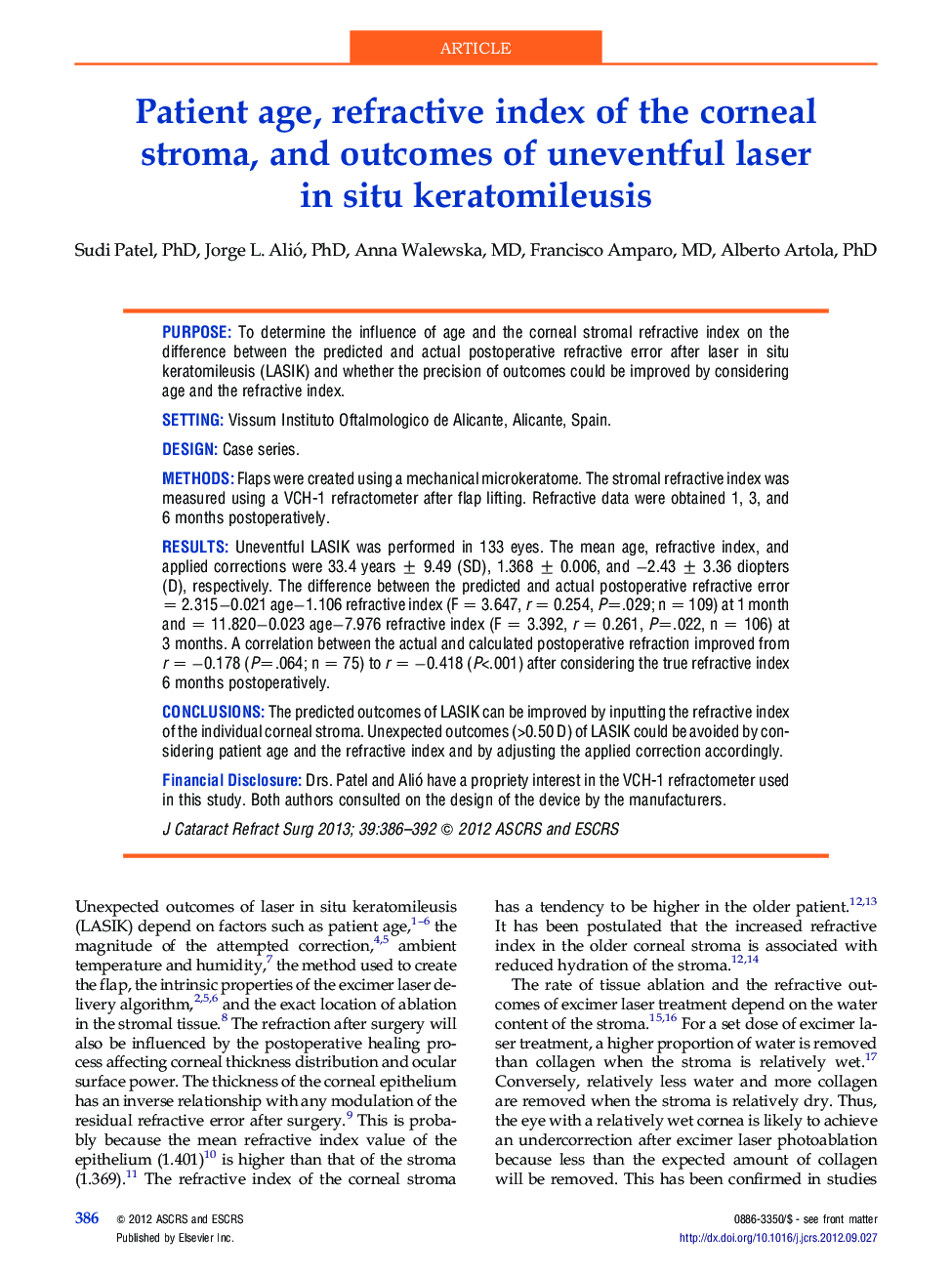| کد مقاله | کد نشریه | سال انتشار | مقاله انگلیسی | نسخه تمام متن |
|---|---|---|---|---|
| 4017356 | 1261974 | 2013 | 7 صفحه PDF | دانلود رایگان |

PurposeTo determine the influence of age and the corneal stromal refractive index on the difference between the predicted and actual postoperative refractive error after laser in situ keratomileusis (LASIK) and whether the precision of outcomes could be improved by considering age and the refractive index.settingVissum Instituto Oftalmologico de Alicante, Alicante, Spain.DesignCase series.MethodsFlaps were created using a mechanical microkeratome. The stromal refractive index was measured using a VCH-1 refractometer after flap lifting. Refractive data were obtained 1, 3, and 6 months postoperatively.ResultsUneventful LASIK was performed in 133 eyes. The mean age, refractive index, and applied corrections were 33.4 years ± 9.49 (SD), 1.368 ± 0.006, and −2.43 ± 3.36 diopters (D), respectively. The difference between the predicted and actual postoperative refractive error = 2.315−0.021 age−1.106 refractive index (F = 3.647, r = 0.254, P=.029; n = 109) at 1 month and = 11.820−0.023 age−7.976 refractive index (F = 3.392, r = 0.261, P=.022, n = 106) at 3 months. A correlation between the actual and calculated postoperative refraction improved from r = −0.178 (P=.064; n = 75) to r = −0.418 (P<.001) after considering the true refractive index 6 months postoperatively.ConclusionsThe predicted outcomes of LASIK can be improved by inputting the refractive index of the individual corneal stroma. Unexpected outcomes (>0.50 D) of LASIK could be avoided by considering patient age and the refractive index and by adjusting the applied correction accordingly.Financial DisclosureDrs. Patel and Alió have a propriety interest in the VCH-1 refractometer used in this study. Both authors consulted on the design of the device by the manufacturers.
Journal: Journal of Cataract & Refractive Surgery - Volume 39, Issue 3, March 2013, Pages 386–392